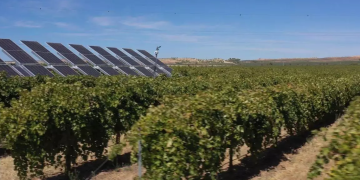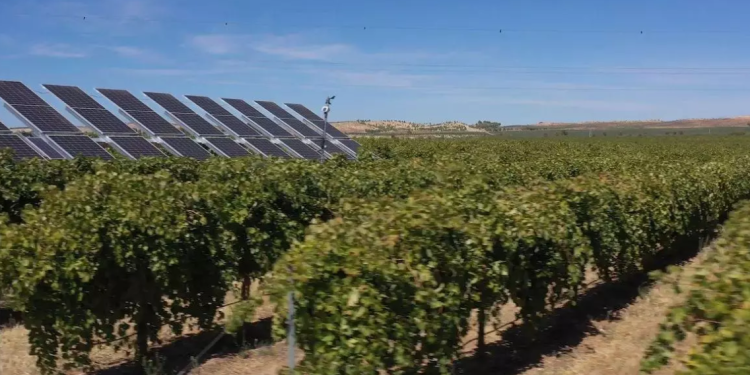#Agriculture #SolarEnergy #Sustainability #Bioagrovoltaics #Spain #Innovation #OrganicFarming #ClimateChange #RenewableEnergy #Agrivoltaic #EnvironmentalStewardship
In the heart of Castilla-La Mancha, a region blessed with vast agricultural landscapes, a paradigm shift is underway. The traditional notion of farms solely dedicated to crops or solar panels is being redefined. The concept of bioagrovoltaics, an ingenious blend of agriculture and solar energy production, is gaining momentum, offering a promising path towards a more sustainable future.
At the forefront of this movement is the Spanish Photovoltaic Union, championing the integration of solar parks with agricultural lands. During the inaugural Bioagrovoltaic Conference hosted by the Toledo Regional Administration School, stakeholders from diverse backgrounds converged to explore the immense potential of this innovative approach.
One of the key highlights of the event was the unveiling of the first Bioagrovoltaics Report, a comprehensive analysis prepared by the Spanish Photovoltaic Union. This report serves as a manifesto, advocating for the dual benefits of harnessing solar energy while preserving and enhancing agricultural productivity.
The agricultural landscape of Spain, particularly in Castilla-La Mancha, spans nearly four million hectares, presenting a vast canvas for the implementation of bioagrovoltaic systems. The challenge lies in seamlessly integrating solar parks with agricultural activities while ensuring the sustainability of both endeavors.
Central to this integration is the development of transparent solar panels, pioneered by the Institute of Concentrated Photovoltaic Systems (ISFOC) of Puertollano. These innovative panels allow sunlight to permeate through, mitigating shade and facilitating crop growth, thus addressing concerns about land use compatibility.
The potential benefits of bioagrovoltaics extend beyond economic gains. By fostering clean energy production alongside organic farming practices, this symbiotic approach aims to combat climate change while enhancing agricultural resilience. Moreover, initiatives such as the Wine Solar Agrovoltaic Project in Guadamur exemplify the practical application of this concept. Here, vineyards adorned with adaptable solar modules not only yield quality grapes but also contribute to energy self-sufficiency and environmental stewardship.
In conclusion, the convergence of solar energy parks with agricultural farms represents a paradigm shift in sustainable land use practices. As stakeholders embrace this transformative approach, Spain’s agricultural landscape stands poised to reap the rewards of innovation, resilience, and environmental stewardship.






























